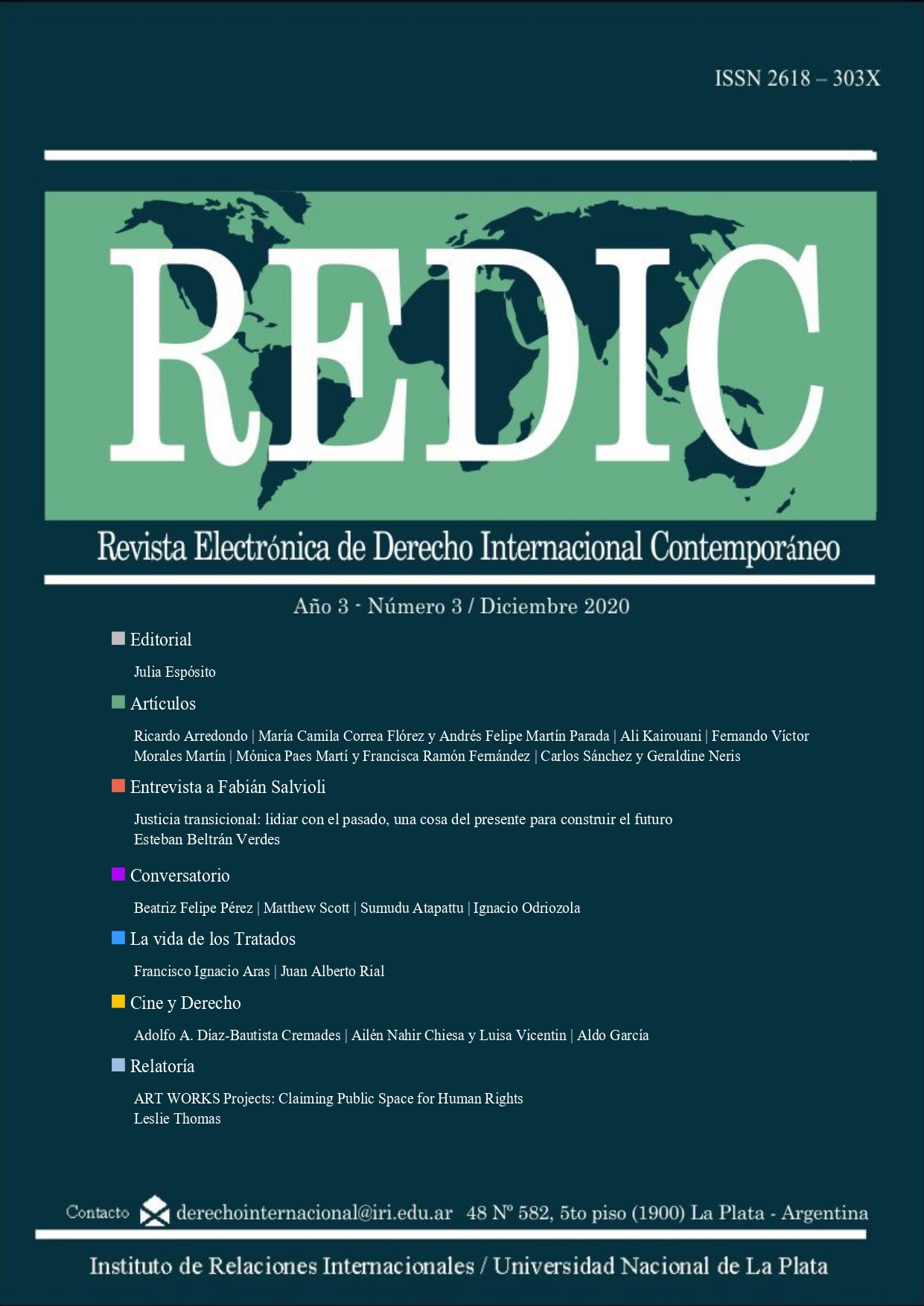“No Man’s Land”
Between the responsibility to protect and international inaction: some thoughts about the role of the United Nations in the Balkans
DOI:
https://doi.org/10.24215/2618303Xe011Keywords:
Yugoslav succession, United Nations, international armed conflictsAbstract
“No Man’s Land” (2001) is a Bosnian film about the cruelty of war fights and the processes undergone by those involved in combat. The film puts forward a fictional – though true- tale about the wars that dissolved Yugoslavia, particularly the Serbo Bosnian war. The film is set somewhere between Bosnia and Serbia, and most of the story takes place inside the trenches, where absurd conversations and satiric situations run rampant. The film is an anti-war satire that puts the viewer at a crossroad: laughing or crying. This paper analyzes the film “No Man’s Land” as it illustrates the wars of Yugoslav succession and challenges the role of the United Nations as a primary actor in international armed conflicts with a critical approach to its functioning and bureaucracy.
Downloads
References
Armada, A. (2015). Sarajevo. Malpaso Ediciones.
Heathershaw, J. (2008). “Unpacking the Liberal Peace: The Dividing and Merging of Peacebuilding Discourses” en Millennium - Journal of International Studies. Acceso online: http://mil.sagepub.com/content/36/3/597
Pattison, J. (2010). “Humanitarian Intervention and the Responsibility to Protect: Who Should Intervene?”. Oxford University Press.
Downloads
Published
How to Cite
Issue
Section
License
Aquellos autores/as que tengan publicaciones con esta revista, aceptan los términos siguientes:
- Los autores/as conservarán sus derechos de autor y garantizarán a la revista el derecho de primera publicación de su obra, el cuál estará simultáneamente sujeto a la Licencia de reconocimiento de Creative Commons (BY-NC-SA) 4.0 que permite a terceros compartir la obra siempre que se indique su autor y su primera publicación esta revista, no se haga uso comercial, y si se remezcla, se transforma o se crea a partir del material, se debe distribuir bajo la misma licencia del original.
- Los autores/as podrán adoptar otros acuerdos de licencia no exclusiva de distribución de la versión de la obra publicada (p. ej.: depositarla en un archivo telemático institucional o publicarla en un volumen monográfico) siempre que se indique la publicación inicial en esta revista.
- Se permite y recomienda a los autores/as difundir su obra a través de Internet (p. ej.: en archivos telemáticos institucionales o en su página web) antes y durante el proceso de envío, lo cual puede producir intercambios interesantes y aumentar las citas de la obra publicada. (Véase El efecto del acceso abierto).





















